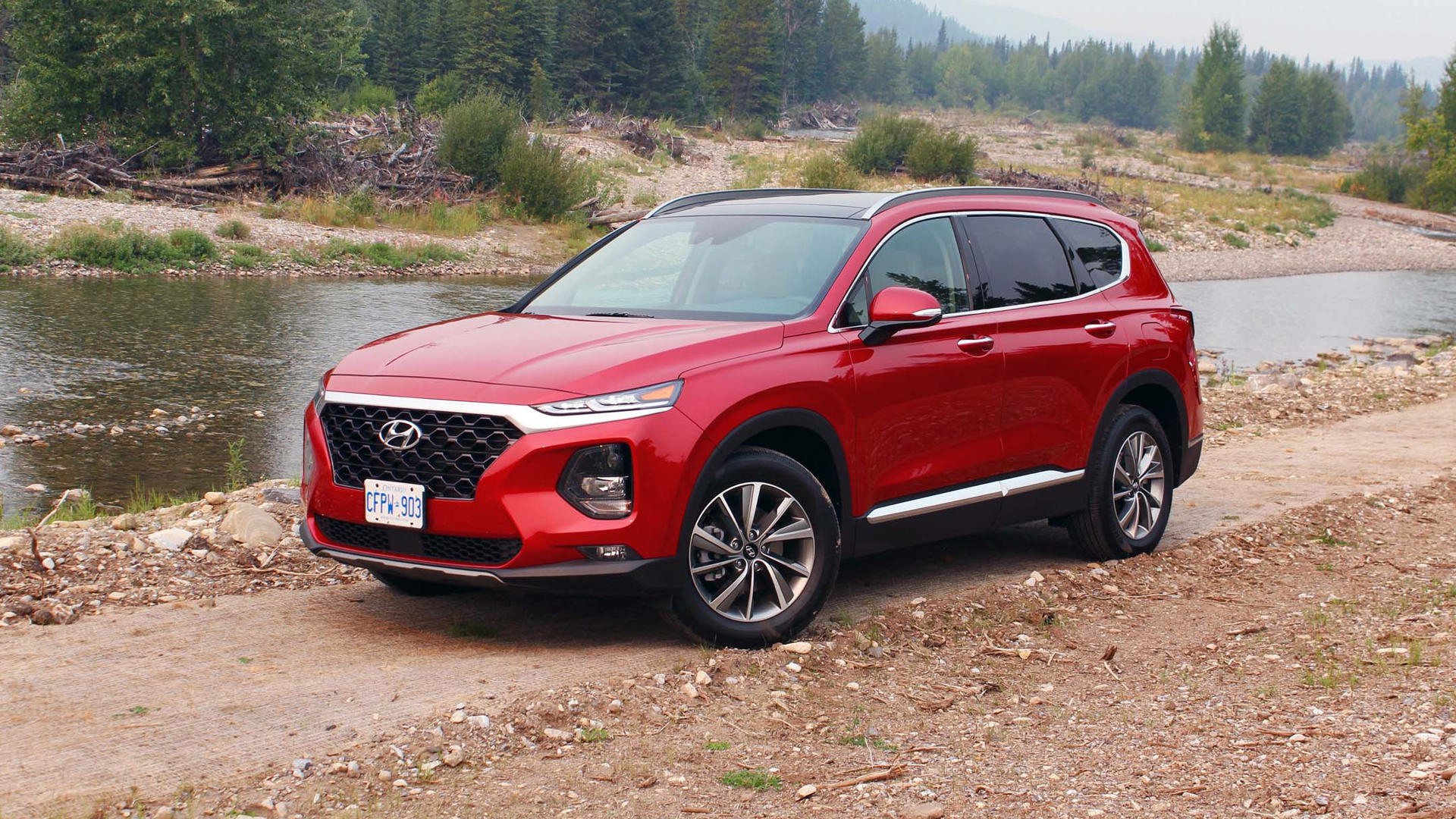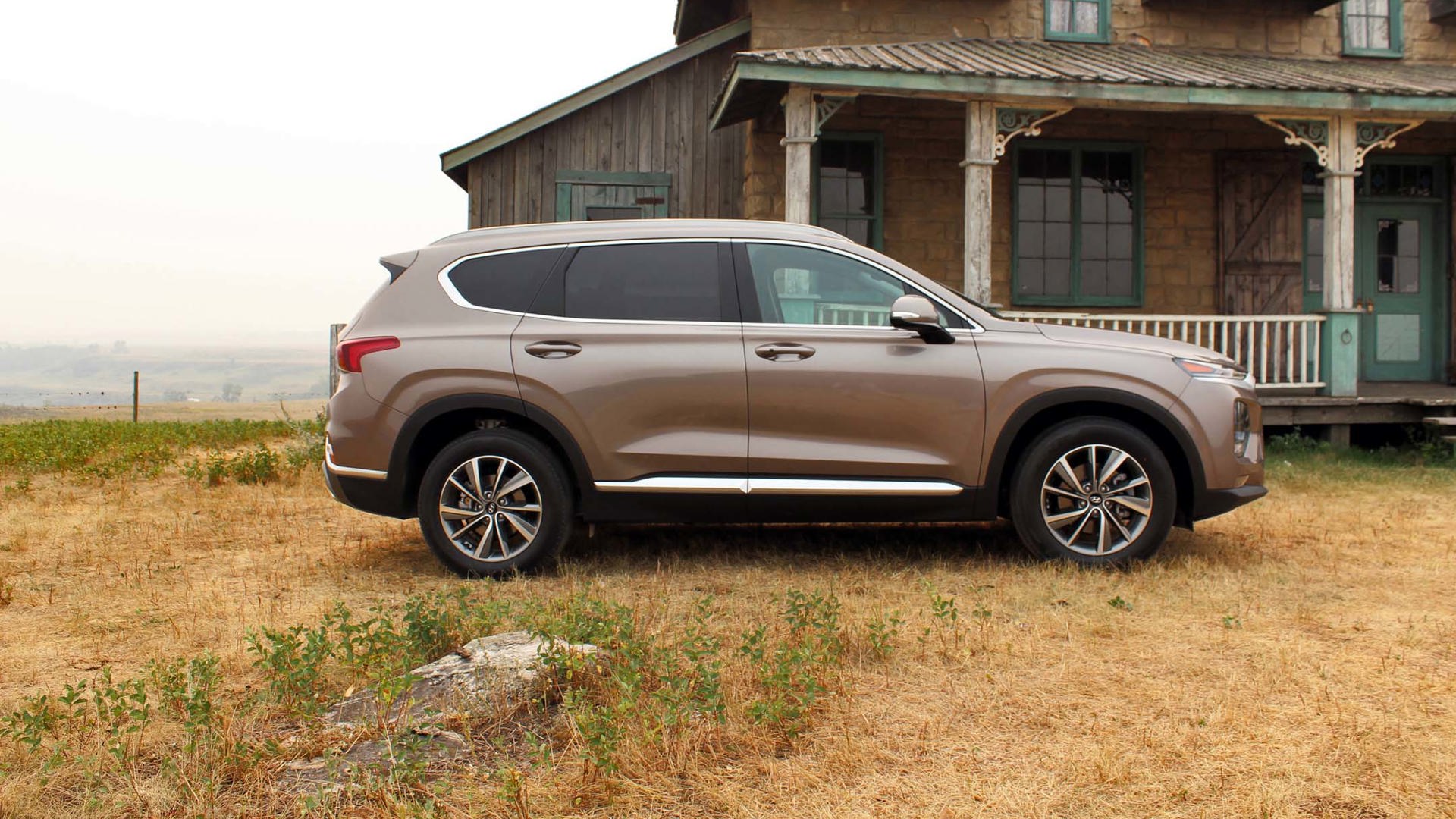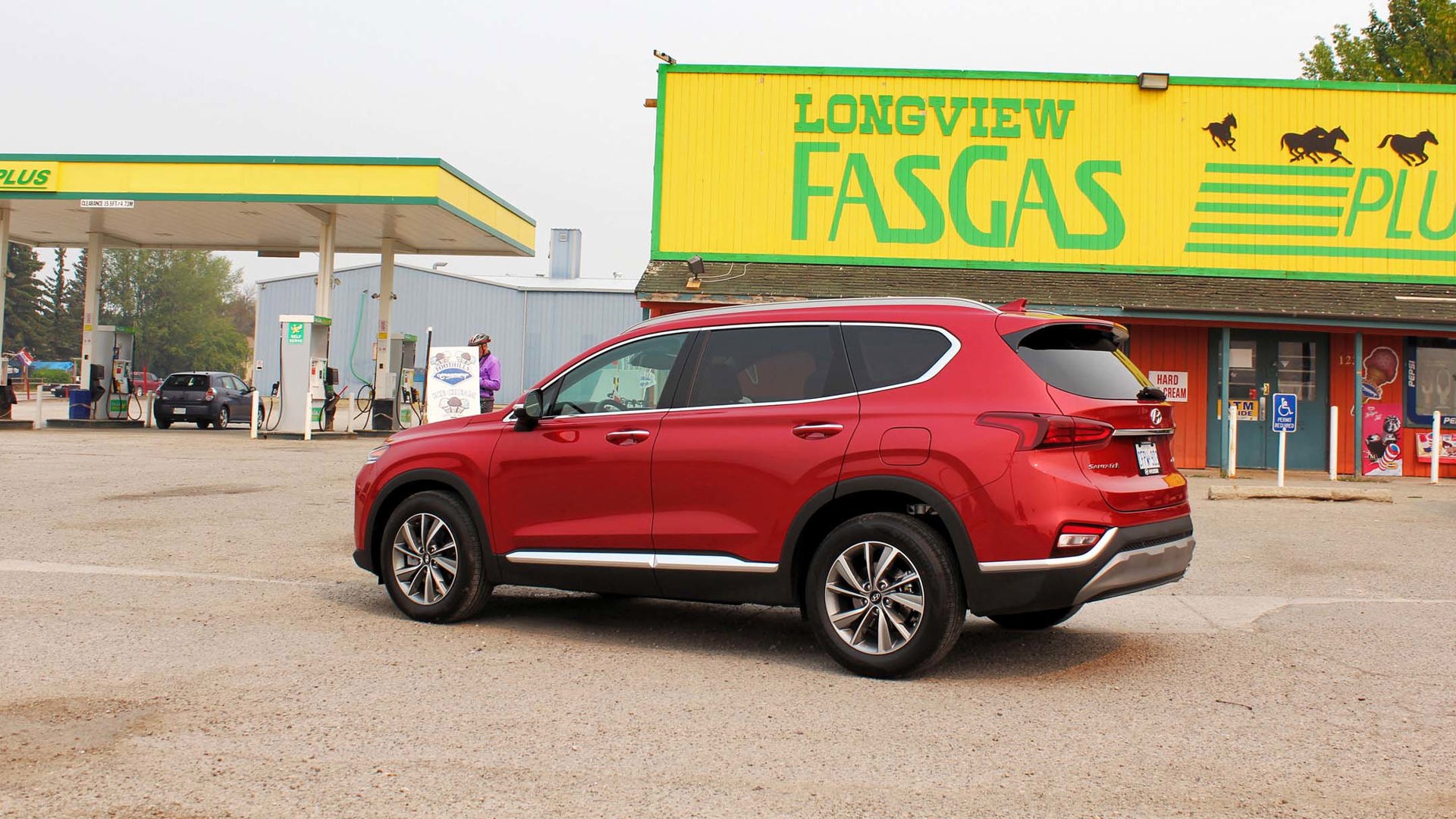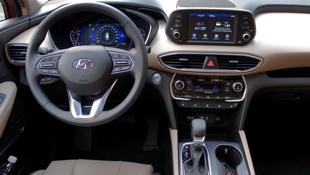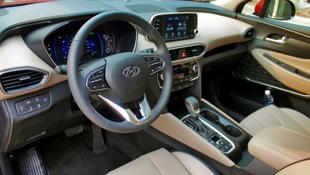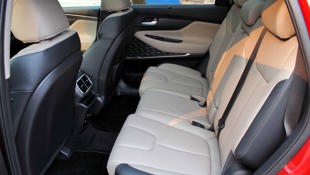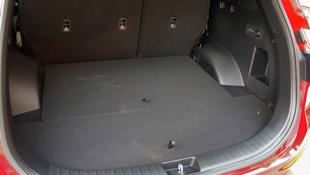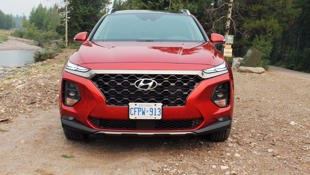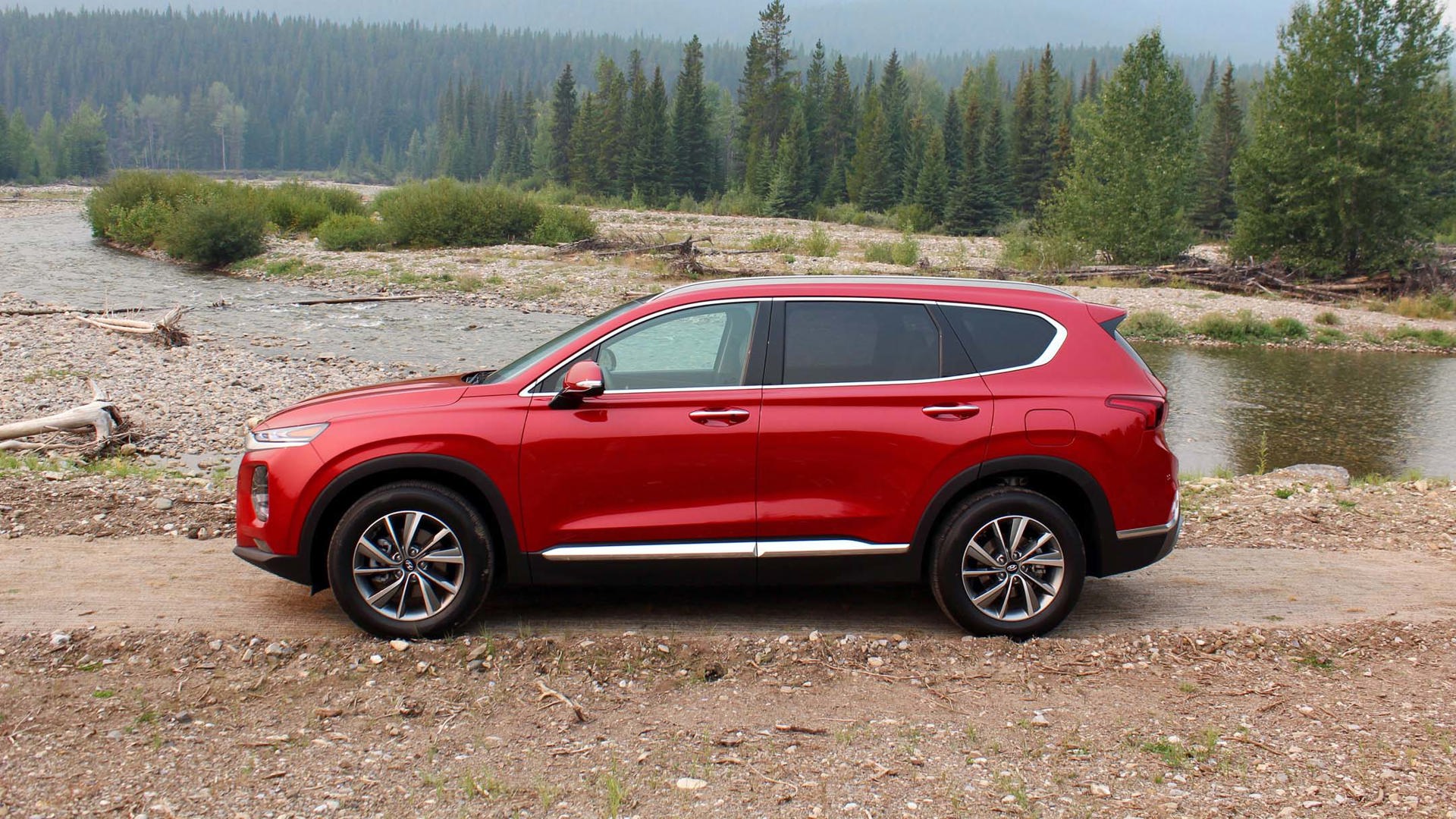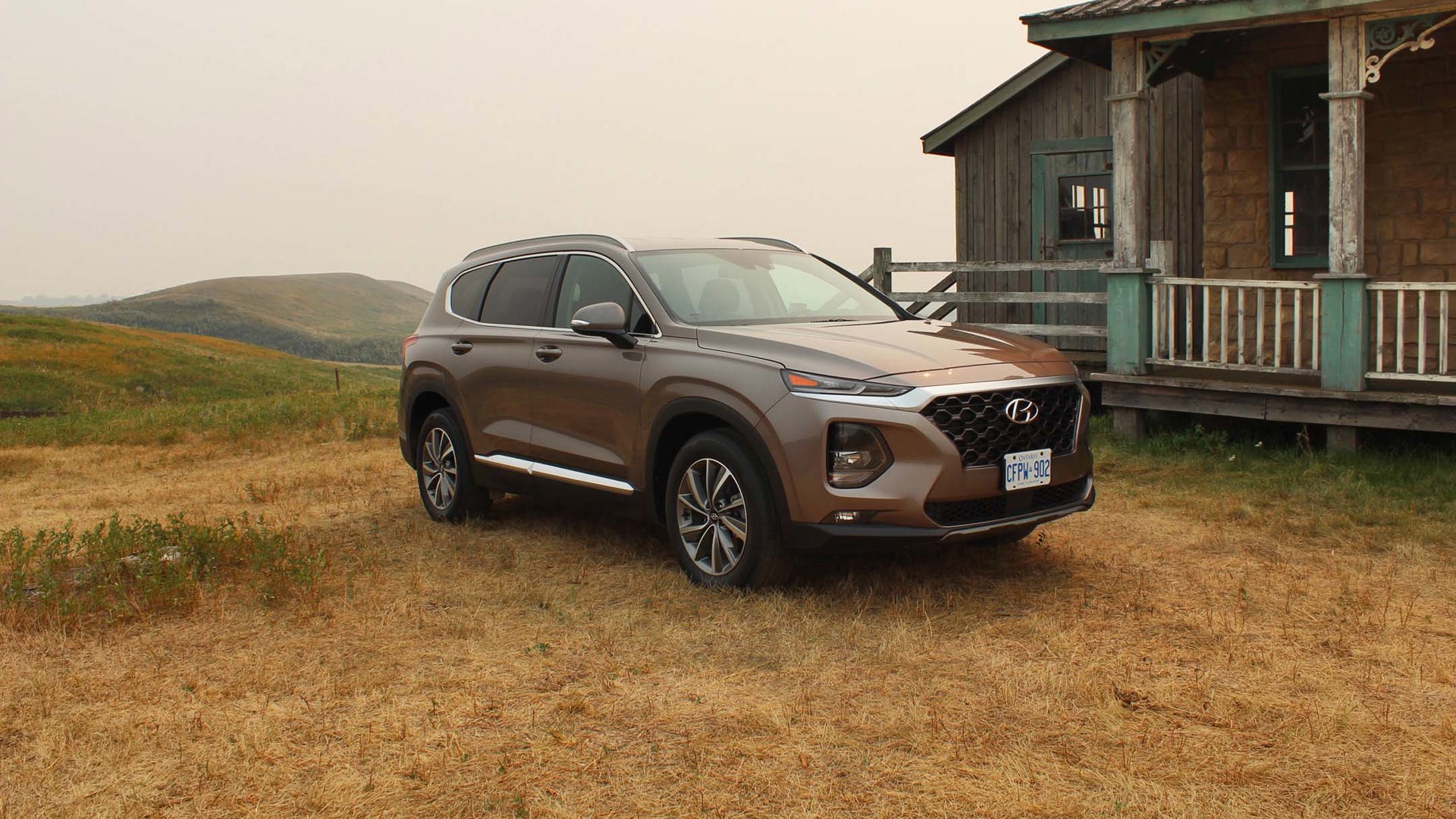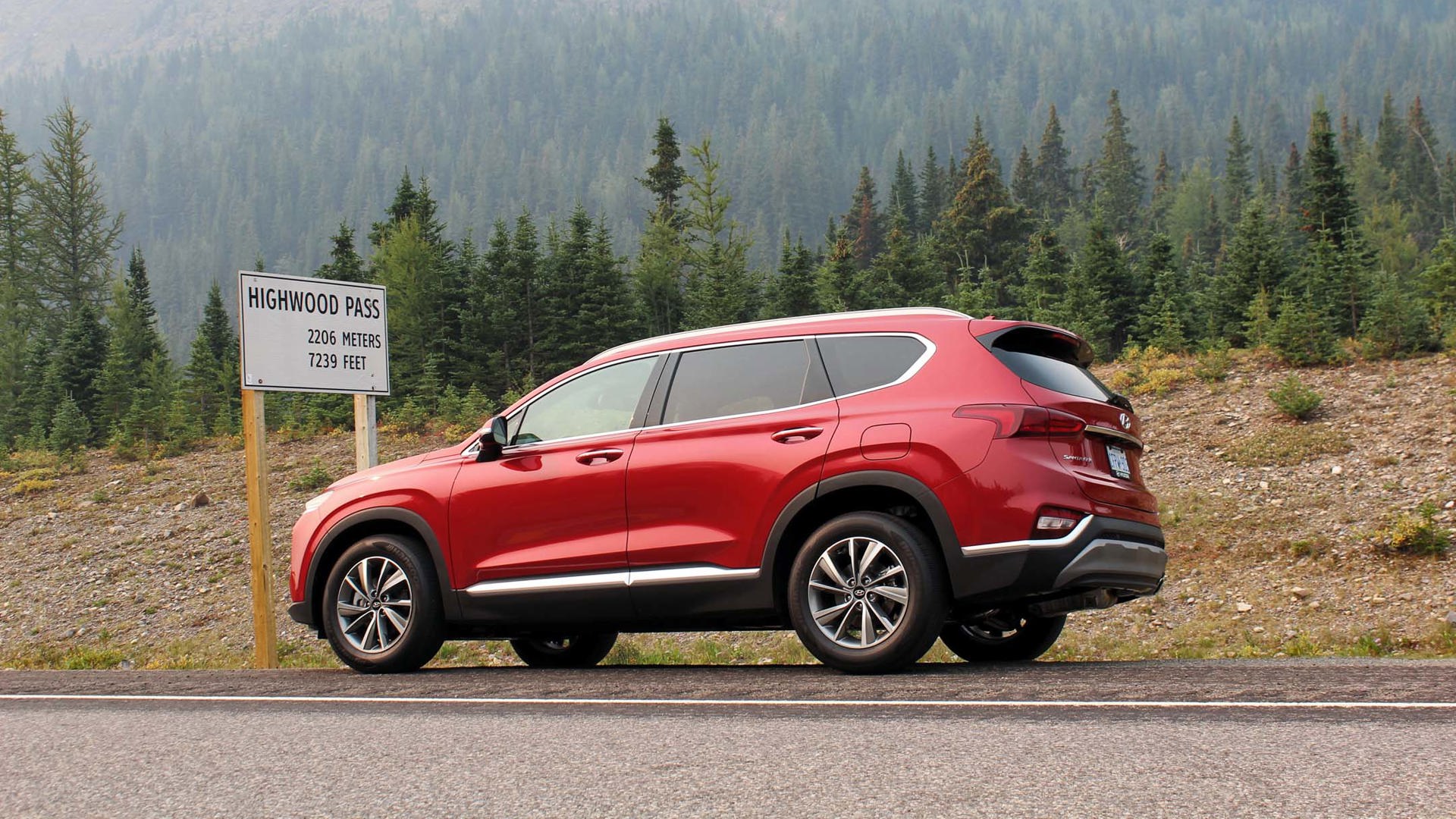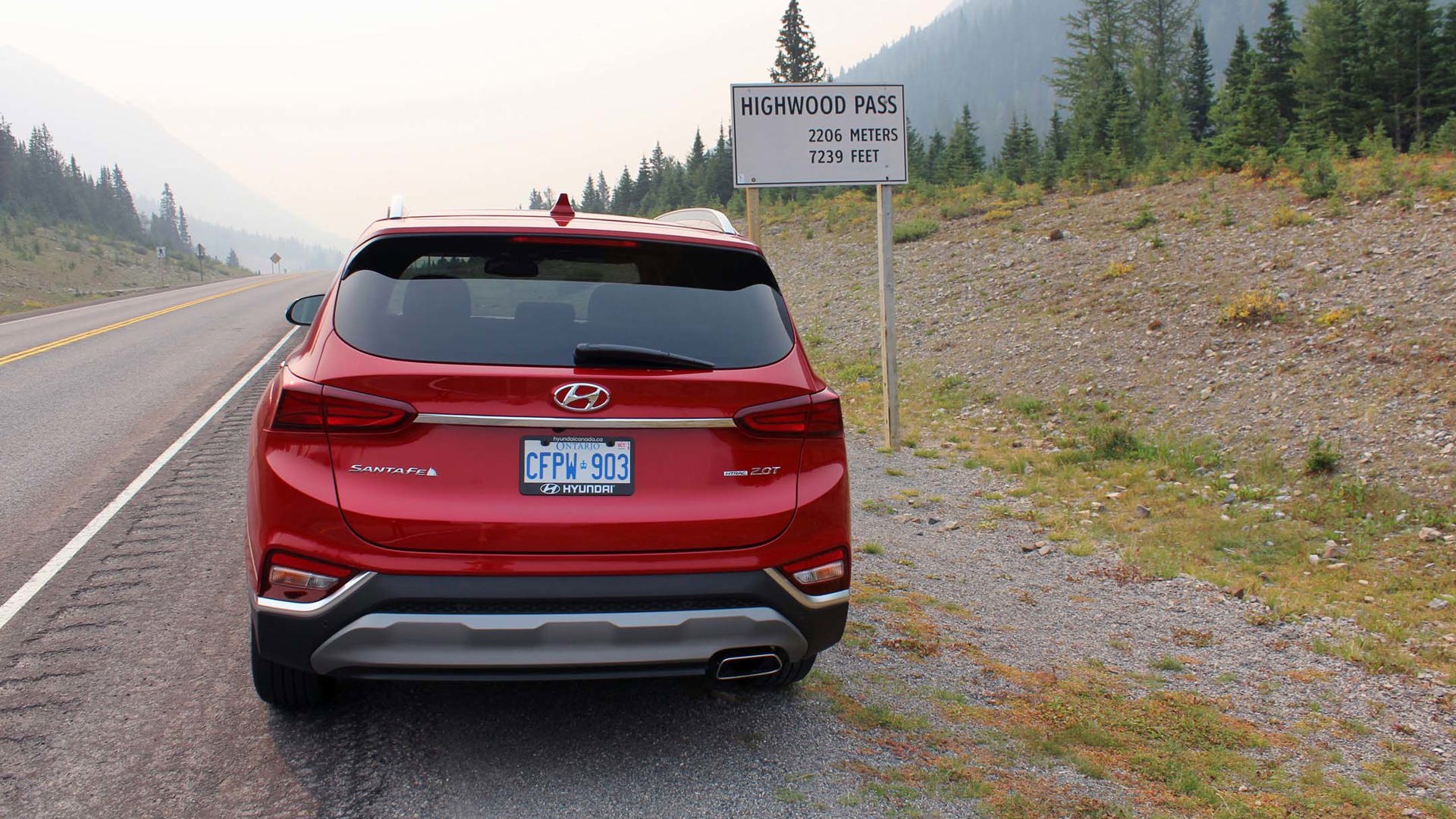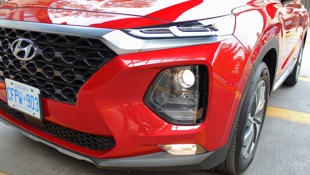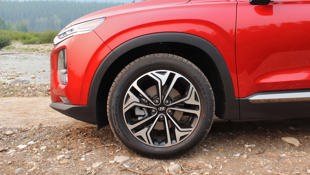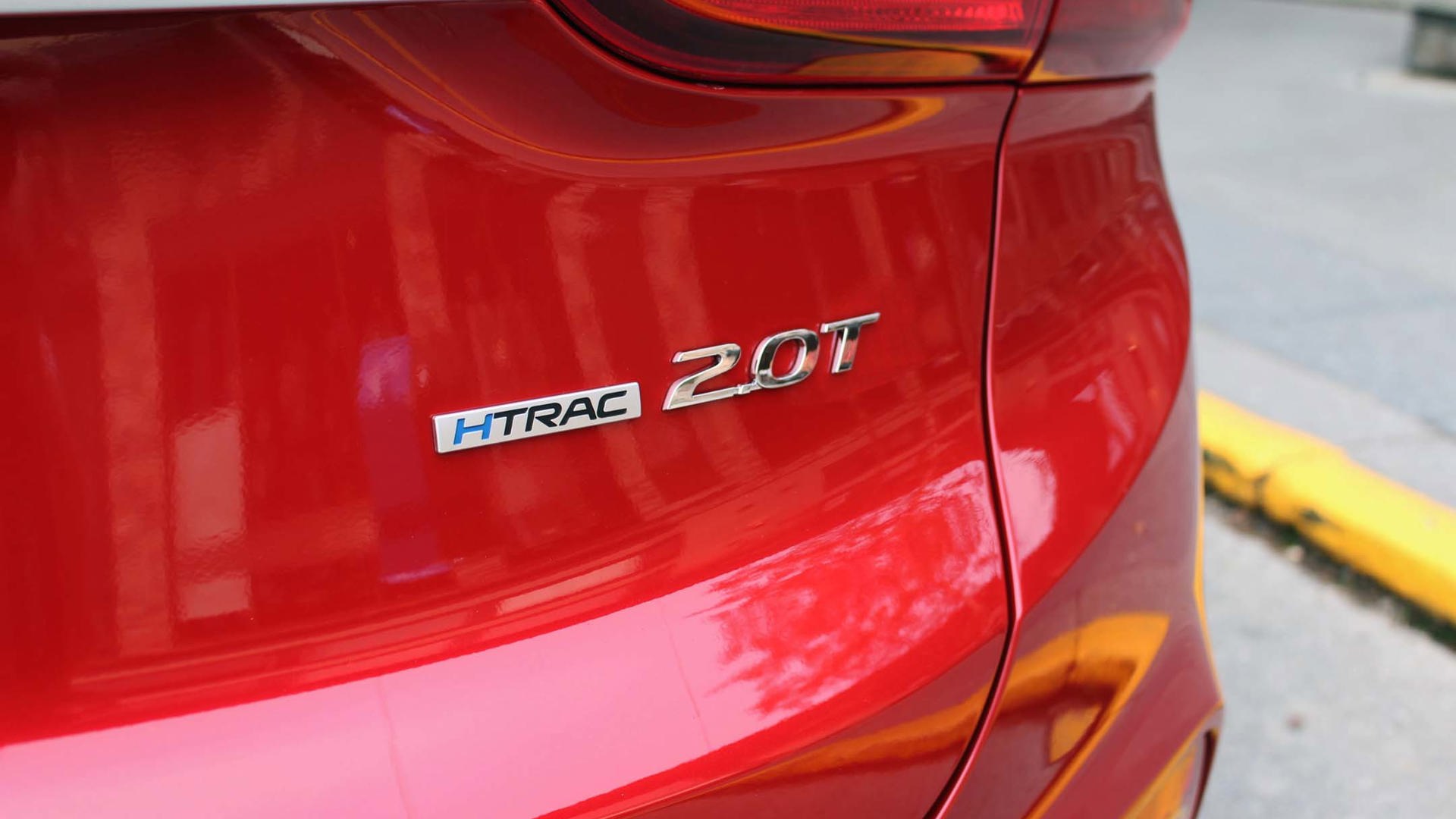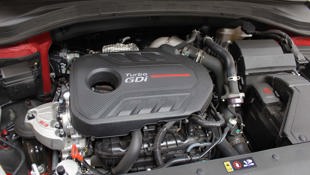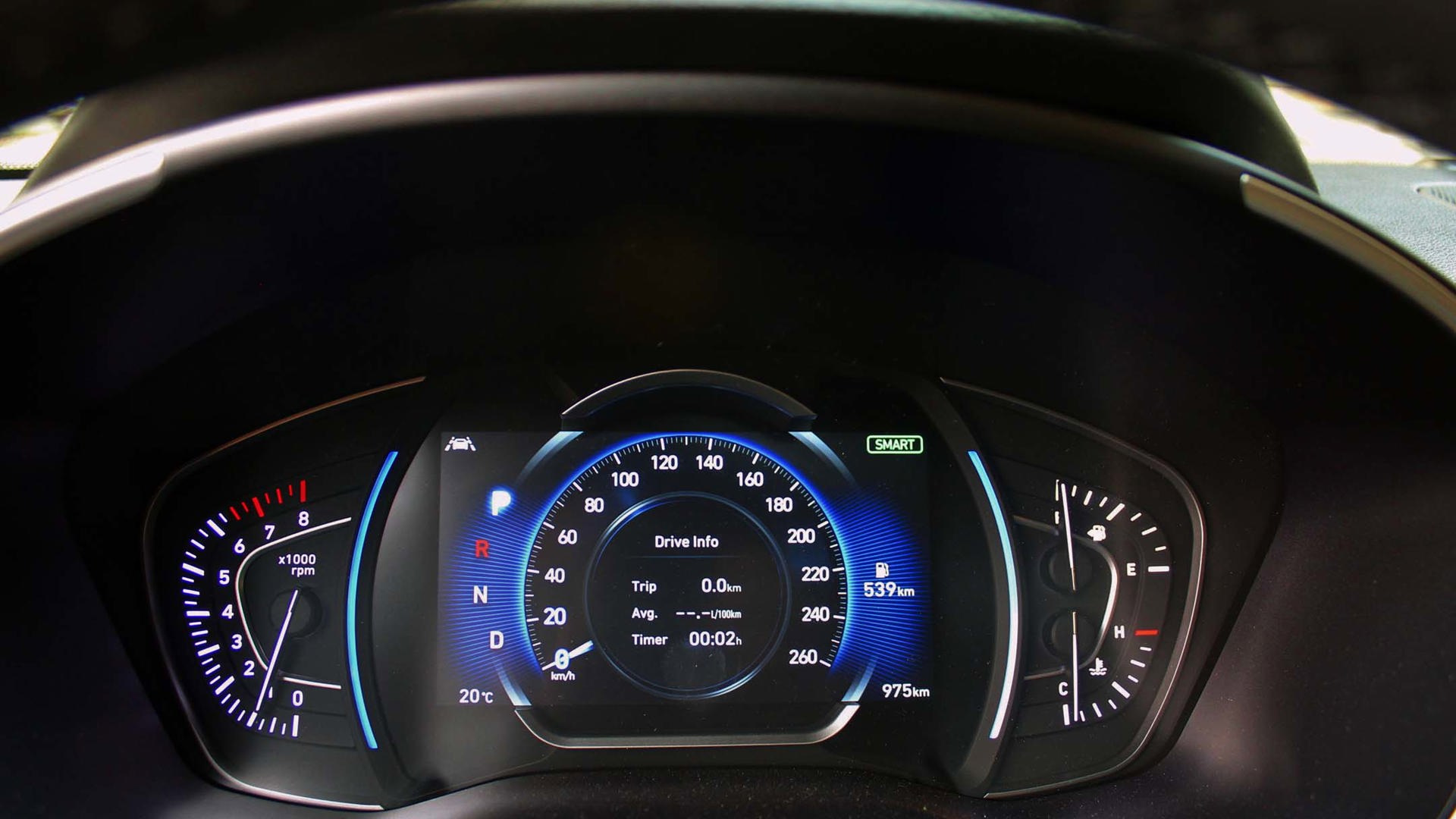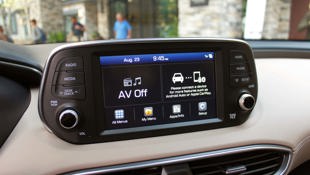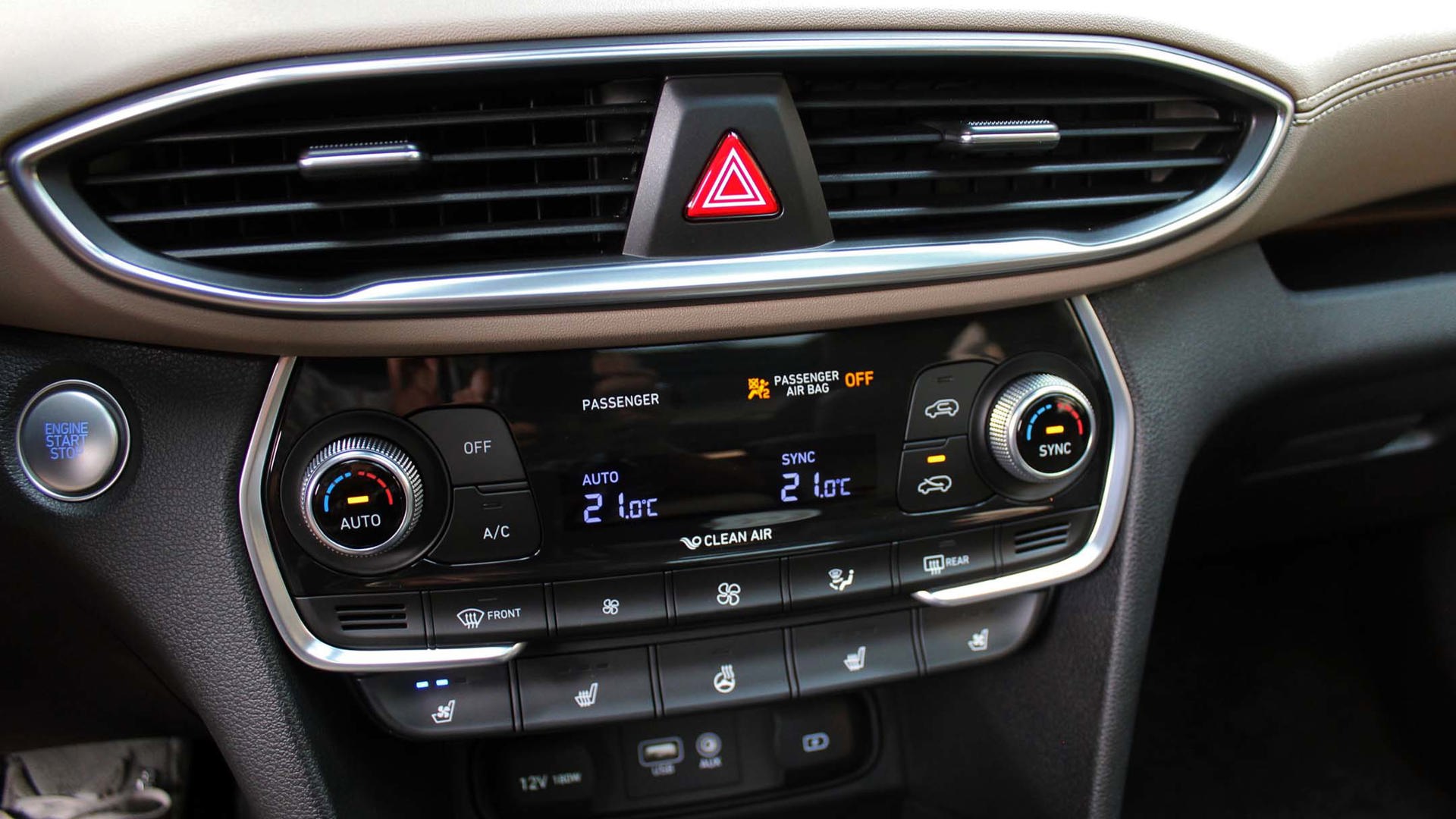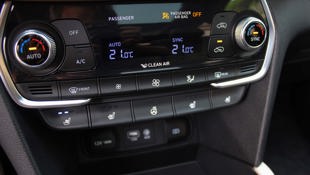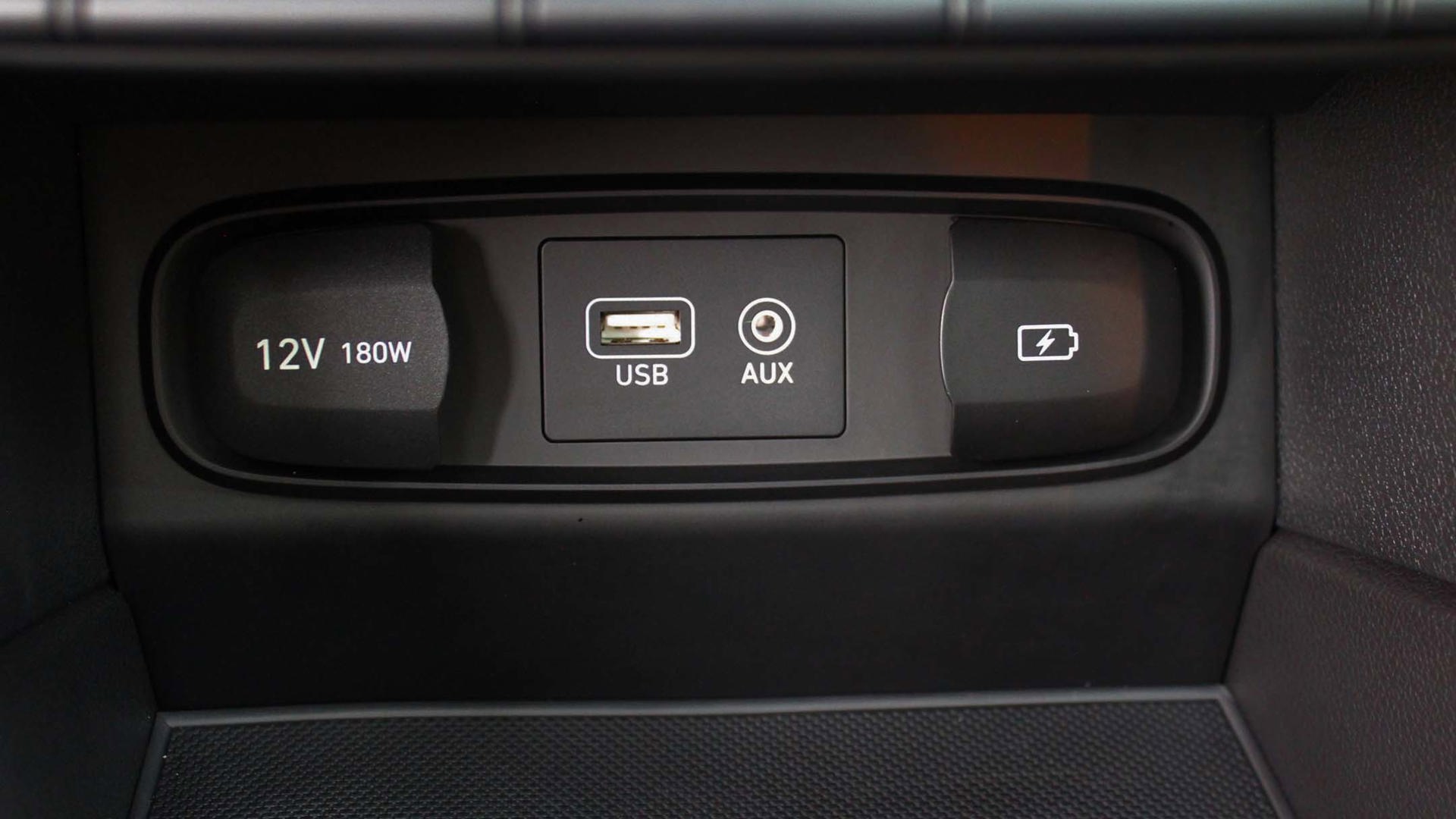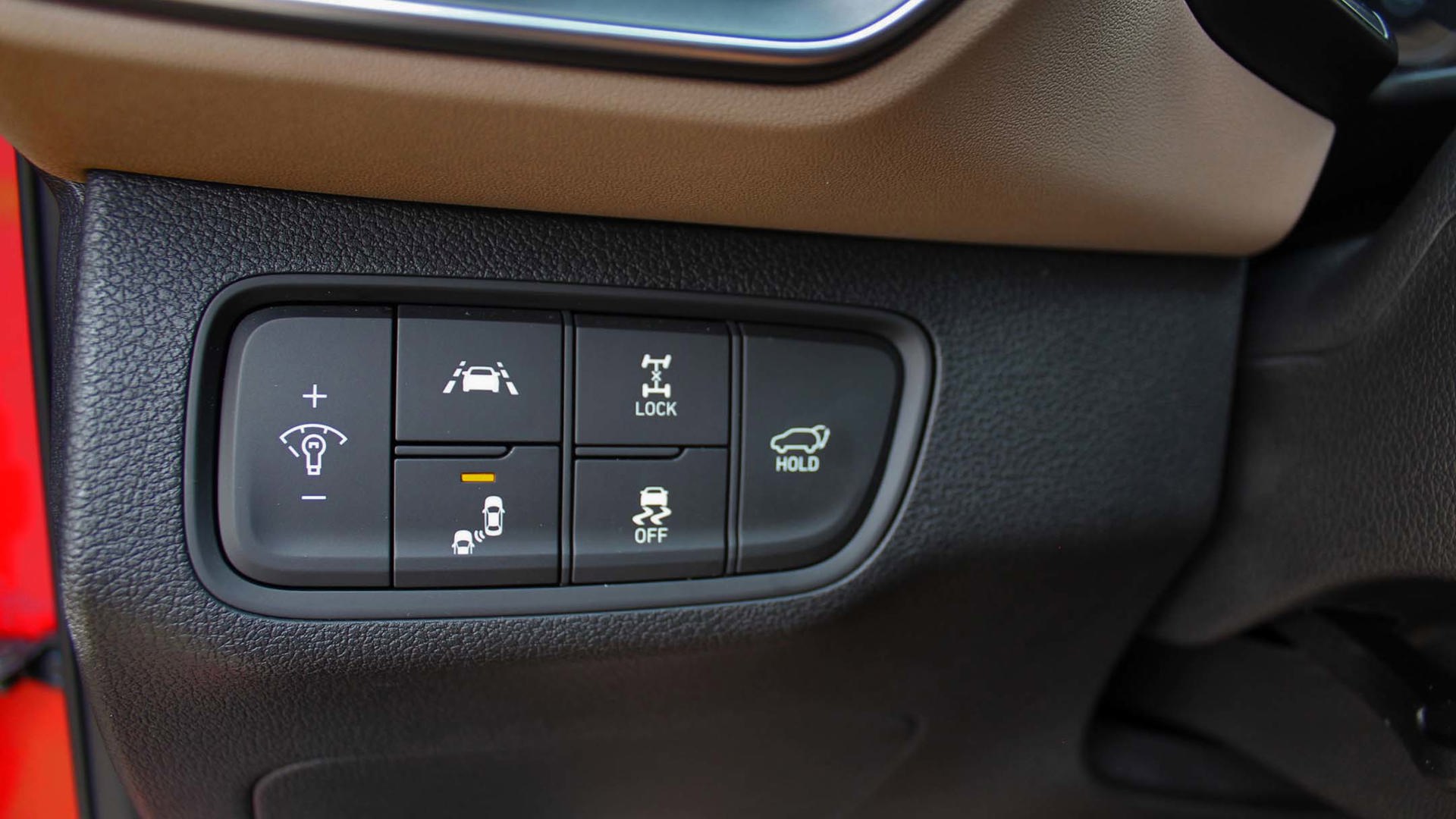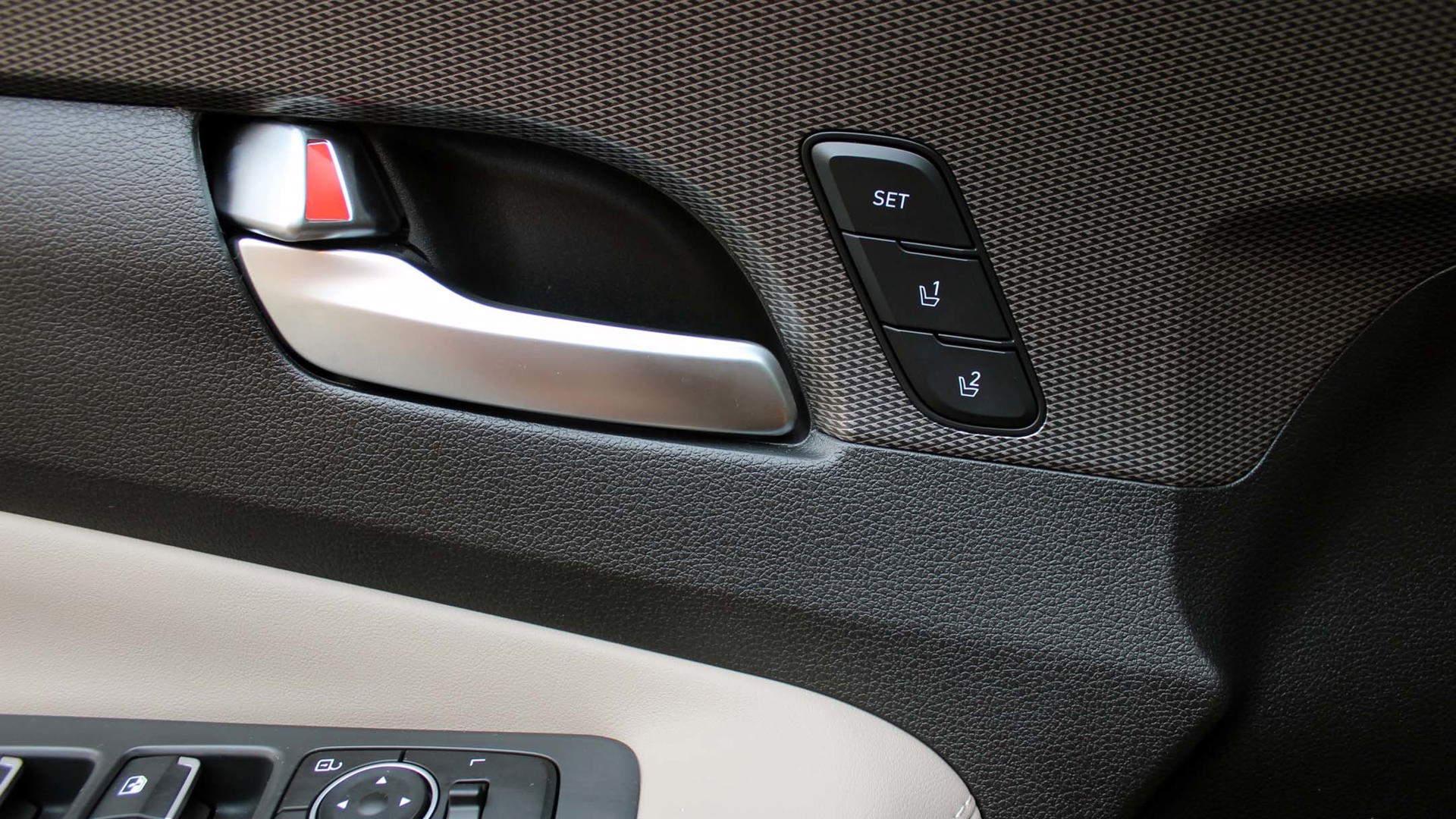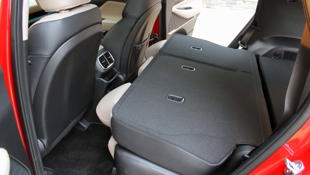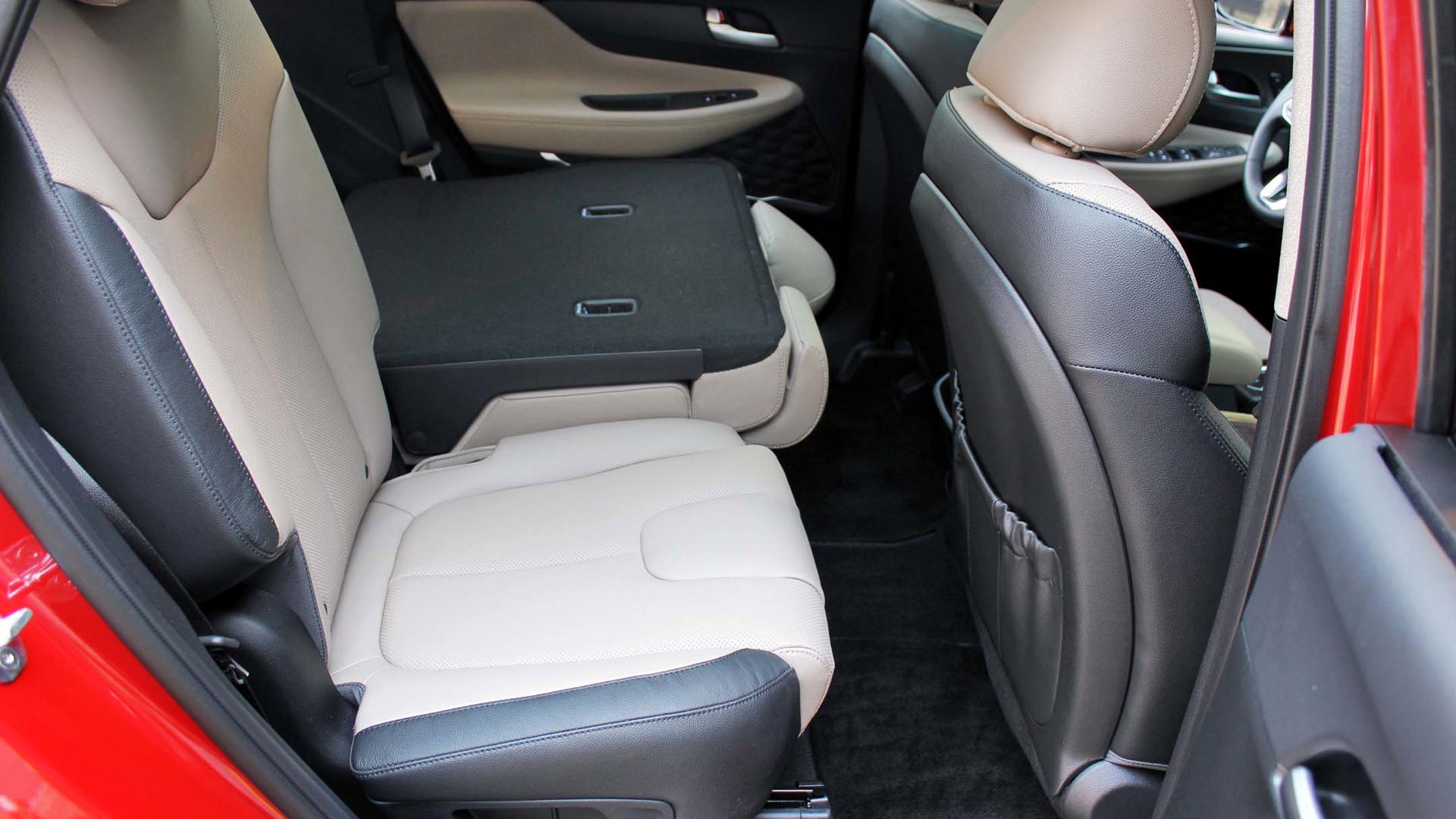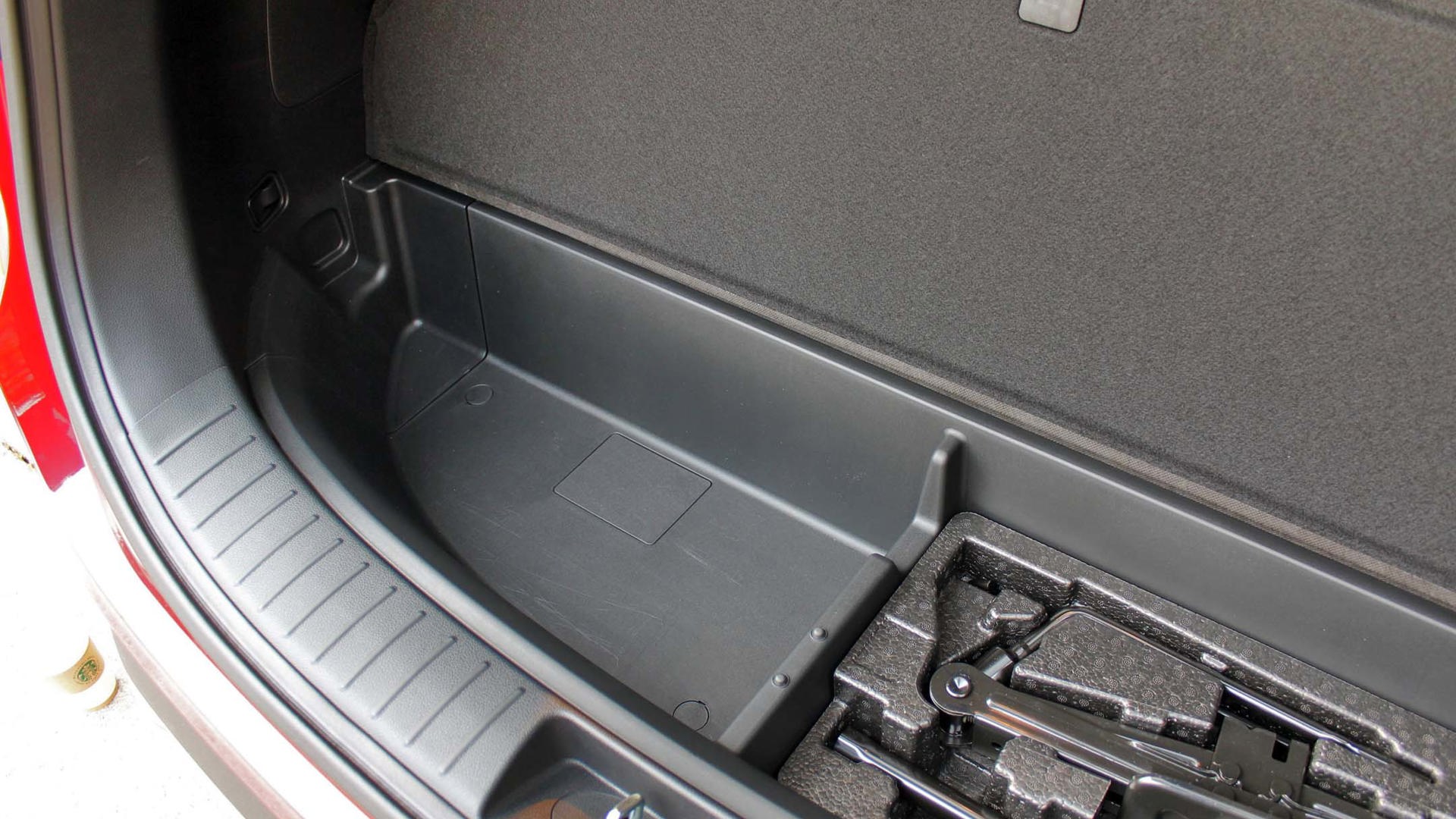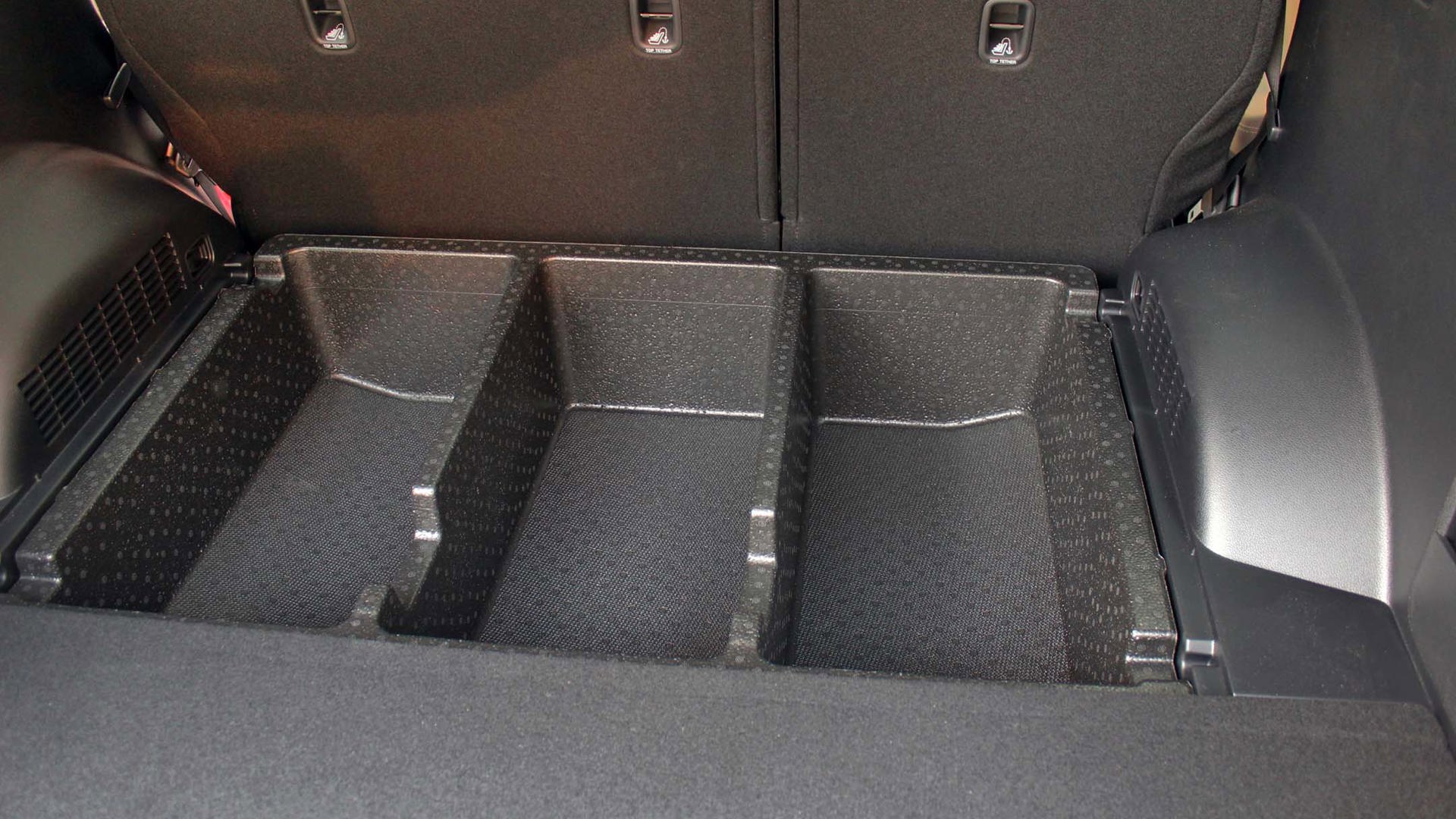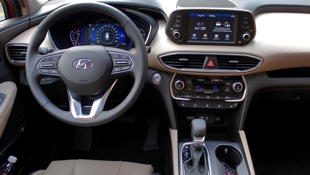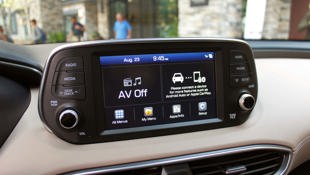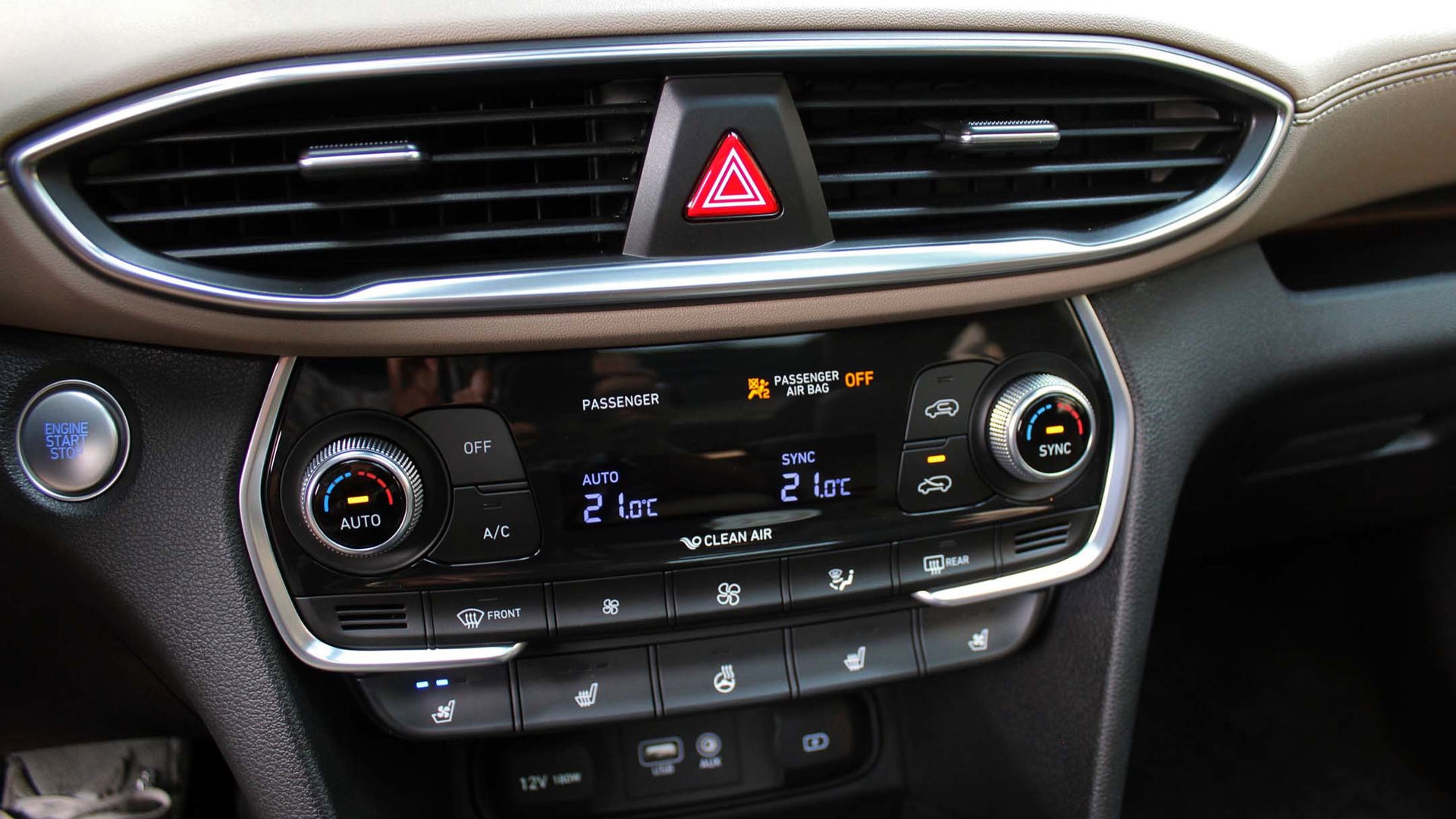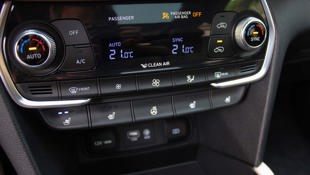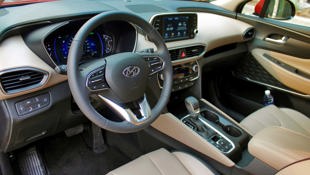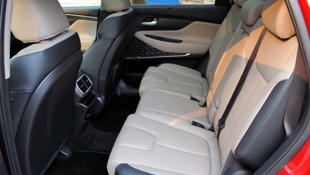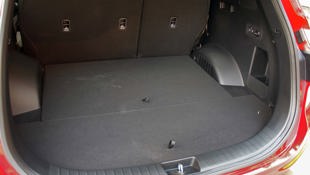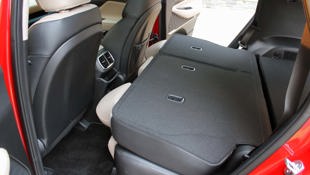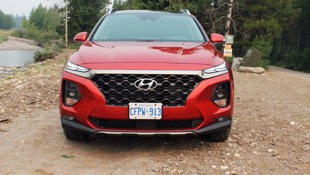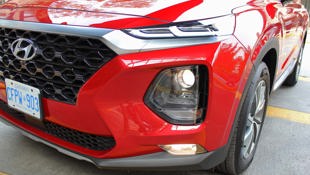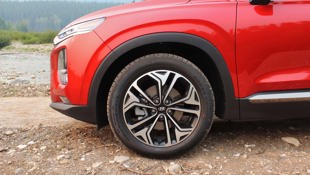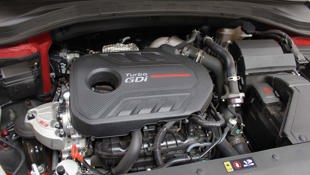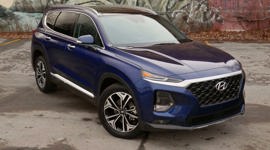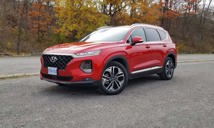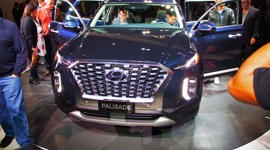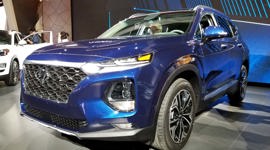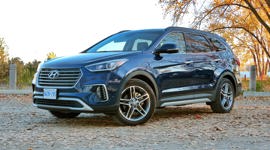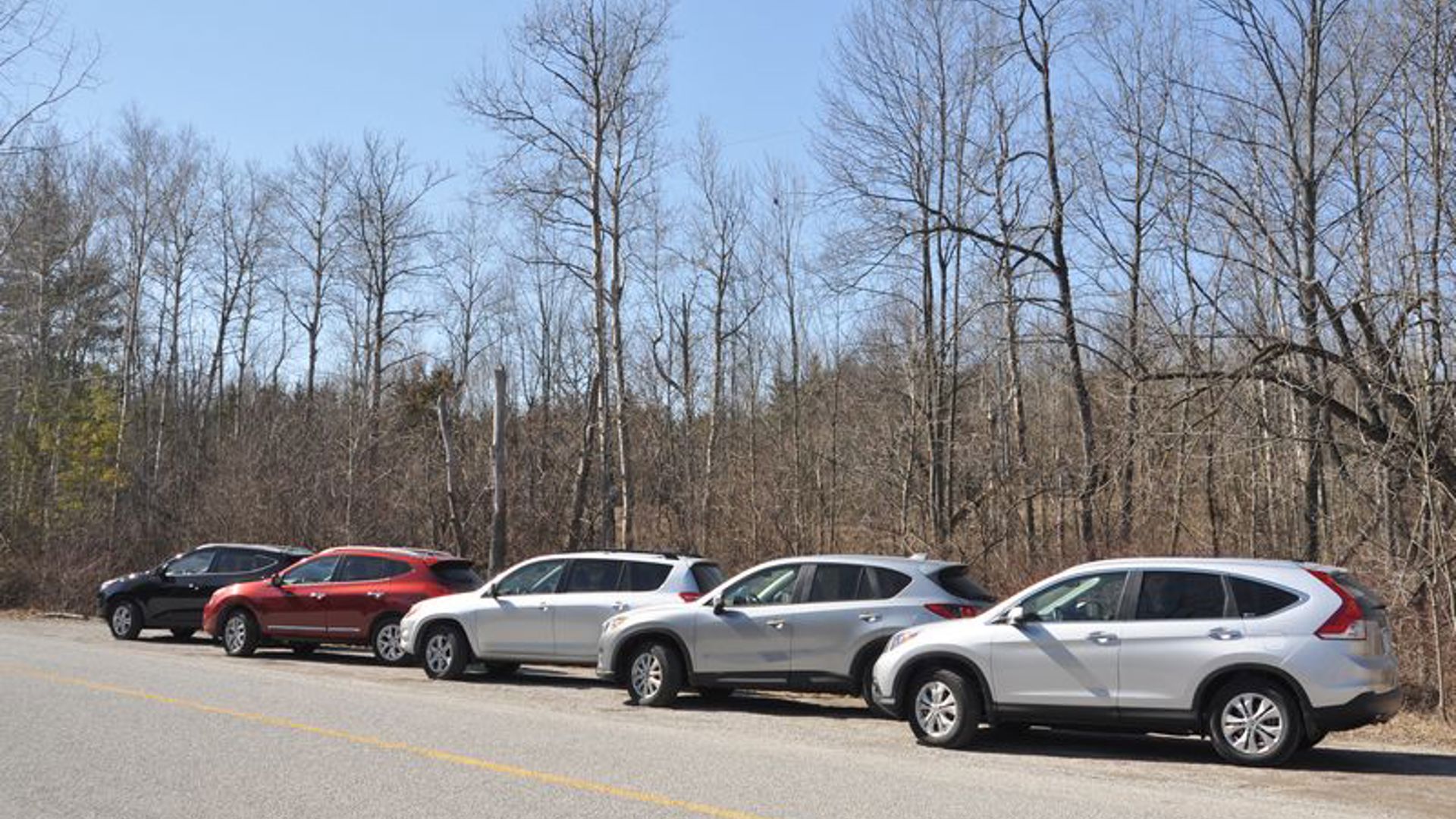KANANASKIS, BC – It’s never a good day for the competition when Hyundai launches a new vehicle. This Korean automaker works at a furious pace, gobbling up market share with models that leapfrog the old in terms of quality, design, tech, and dynamics. Yet it was only a few years ago when a Hyundai’s value and high feature count would be tempered by not-quite-there chassis refinement and vague steering. Always a few “buts” to go along with the good stuff.
Ups the ante with its comprehensive and class-exclusive safety systems, classy design, roomier interior, and refined road manners.
With the all-new five-seat 2019 Santa Fe crossover arriving in Hyundai stores now, you’ll be hard pressed to find any “buts” beneath its fetching sheet metal. It’s an impressive effort that, with a raft of standard safety kit (excluding the base Essential trim) and a handsome, high-quality cabin, leaps to the front of the class.
And what class might that be? With its stretched dimensions (70 mm longer and 10 mm wider) the 2019 Santa Fe is a ’tweener, slotting in at the upper end of the compact segment, and lower end of the intermediates. Hyundai cites its main competitors to be the Ford Edge, Nissan Murano, Honda CR-V, and the new Chevy Blazer.
The 2019 Santa Fe is the first Hyundai to adopt the company’s new simplified four-tier trim structure, one that will apply to all upcoming vehicles – Essential, Preferred, Luxury, and Ultimate.
The bones of this Santa Fe is an all-new structure that uses targeted high-strength steel to increase rigidity and reduce weight – up to 90 kg lighter depending on trim level.
The 2019 Santa Fe’s four-cylinder engines are carried over from the 2018 model, although they now adopt electrically actuated continuously variable valve timing for improved fuel economy. The base 2.4L naturally aspirated four makes 185 horsepower and 178 lb-ft at 4,000 rpm, whereas the lustier 2.0L turbo four kicks out 235 hp and 260 lb-ft from 1,450–3,500 rpm. Both engines feature idle start/stop and are now mated to an in-house Hyundai eight-speed auto, replacing last year’s six-speed unit.
The Santa Fe is a handsome rig, as far as mainstream crossovers go, adopting the design language from the subcompact Kona crossover. The front end is a classy affair, showing a large, nicely sculpted but not too gaudy “cascading” grill flanked by slivers of LED running lights with headlight pods below. Base cars get projector halogens – the Luxury and Ultimate sport LEDs.
Pricing starts at $28,999 for the front-drive Essential with 2.4L four. For this we get 17-inch alloys, fabric seats, heated steering wheel, heated front seats, and 7-inch touchscreen with Apple CarPlay and Android Auto. An additional $1,200 gets Hyundai SmartSense (forward collision mitigation with pedestrian detection, lane-keep assist, driver attention warning, high-beam assist, adaptive cruise with stop-and-go). HTRAC all-wheel drive will cost $2,000 on this base model.
Hyundai expects almost two out of three Santa Fe buyers will go for the Preferred trim that adds a whack of standard kit – all-wheel drive, 18-inch alloys, proximity key with push-button start, eight-way driver seat, dual-zone auto climate, auto-dimming mirror, BlueLink telematics (various remote functions accessed via smartphone and a five-year subscription) and Hyundai SmartSense. But the standard safety features don’t stop there.
As Director of Product Steve Flamand said, “We’ve basically thrown everything and the kitchen sink at this vehicle with regards to safety.” The Preferred, Luxury, and Ultimate also get blind-spot detection and assist, rear cross-traffic collision avoidance-assist, reverse park distance warning, Safe Exit Assist (doors will not open if the system detects oncoming traffic or a bicycle) and Rear Occupant Alert. With the latter, an ultrasonic sensor monitors the second row for movement, and alerts the driver when exiting the vehicle. If locked, the Santa Fe’s lights will flash, horn will sound, and a text message can be sent to your smartphone.
The 2.0L turbo four is a $2,000 upgrade for the Preferred.
Leather is standard fare in the Luxury, as is 360-degree camera, LED interior lighting, LED headlights and taillights, panoramic sunroof, ventilated front seats, heated rear seats, driver’s lumbar and more. The cabin impresses with its elegant design, satin metal detailing, and logical ergonomics. When it comes to the latter, Hyundai gets it right with well marked buttons, rotary controls, and an infotainment interface that is quick to figure out.
Outward visibility is excellent thanks to well positioned exterior mirrors, slim A-pillars, 41 percent more glass area and a low cowl line. It’s an upscale environment, enhanced by interesting textures on the door panels, expensive feeling headliner, and a Jaguar-esque sweep to the upper dash that blends into the doors.
On the move, this 2019 Santa Fe Luxury is a smooth operator. Very little wind noise, engine noise, or road vibration intrude, and the turbo-four and eight-speed work in harmony to provide quiet, seamless progress. Throttle response is a bit elastic, but there’s sufficient poke when the turbo spools up.
Hyundai has evidently been burning the candle at both ends when it comes to chassis refinement and steering feel, no doubt helped along by some German talent they’ve brought on board. While you’ll find more sporty dynamics in the Honda CR-V and Mazda CX-5, this new Santa Fe appears to have taken ride quality and noise suppression to a higher level without any loss of body control.
HTRAC all-wheel drive is a clever, multi-faceted system that incorporates brake-based torque-vectoring for both front and rear wheels, while also shuffling torque from front to back. There are three drive modes: Comfort runs with a front-to-rear torque split that varies between 80:20 and 65:35; Smart runs 100:0 to 80:20; and Sport gives more rear thrust with 65:35 to 50:50. In practice, you won’t notice much difference between them.
That said, HTRAC is a seamless system, and where it surprised me was on some loose gravel roads where the torque vectoring eliminated any plowing in the corners, giving reassuringly immediate turn-in with no understeer.
Stepping up to the top Ultimate trim bestows 19-inch alloys, powered-lift gate, 8-inch screen with navigation, head-up display, rain-sensing wipers, head-up display, and a rather excellent Infinity audio system.
The 2019 Santa Fe replaces the five-seat 2018 Santa Fe Sport. If you want a three-row version of this new Santa Fe, you’re out of luck… sort of. The current longer wheelbase seven-seat 2018 Santa Fe XL will soon make way for an all-new three-row seven-seater that will carry its own dedicated nameplate, and according to Hyundai, will cast a large shadow tailored specifically for North American tastes.
While there wasn’t much wrong with the outgoing Santa Fe, this fourth-generation effort ups the ante with its comprehensive and class-exclusive safety systems, classy design, roomier interior, and refined road manners. Good news for families. Not so much for the competition.
